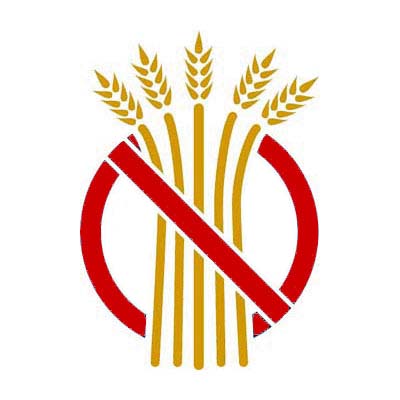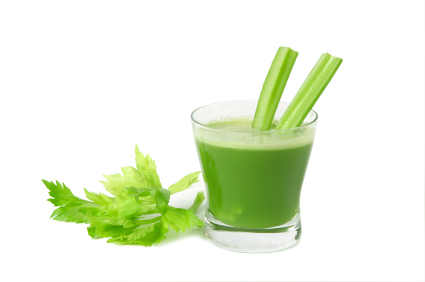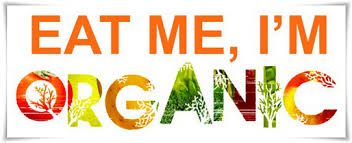
First of all, let's get to a couple of theories underlying the idea of using food. The idiom is "You are what you eat." And as that gets to the point that food has an effect on us -- and effect so strong that it shapes our bodies and who we are -- it's true. The second theory is Hippocrates' saying, "Let food be your medicine." I want to use anything I can use to heal this cancer and keep myself out of surgery, and so I definitely want to consider the impact that food is having. Not only am I going to include foods that have cancer-fighting powers, but I also want to remove all the cancer-causers.
If you know me, you are reading this and probably the way everyone that I've told in person has reacted -- completely horrified. Because you are thinking, "What else could you possibly do to your diet?"
So let's back up. Here are the basics:

1. I have been gluten-free for almost 10 years. It was tough going at the start, but now it's totally not a big deal. I don't eat gluten-free bread/ish products, simply because over time I have let them slide effortlessly out of my diet.

2. I have been pescatarian, then vegetarian, then vegan. Almost fully vegan for about 3 years. (The qualifiers are in there, because I would still eat sushi once every couple of months. Because sushi is worth it.)

3. I have been juicing green juice every morning for about 3 years.
4. I have been sugar-free for ... this one is hard to put a year on, because cutting out the sugar was a major battle for me. But I started working on being sugar-free 6 years ago, and probably finally became successful about 4 years ago.
5. I don't drink alcohol.
6. I cook. This means I don't eat processed foods. This again has been the slow evolution like getting rid of the gluten-free bread substitutes. I enjoy cooking, so when I go to the grocery store, my cart is full of real food -- like vegetables.

7. I buy organic food. I try to buy exclusively organic food, but that is a little harder here, so I compromise on the "Clean 15" and try to keep the "Dirty Dozen" exclusively organic.
Wow, that's more basics than I thought, but given all that, whatever label you want to give to my style of eating, the basic idea is that I eat good, clean, unprocessed food that is as chemical free as possible.
And the question again is, "What is there to change?"
For me, 3 major things.
1. Sugar

I mentioned above that I have a problem with sugar. I cut it out 4 years ago, and finally felt like I had conquered that. But I slipped, and let in fruit, and more fruit, and more fruit, and more. And even though fruit has vitamins and minerals that we need, for me, the amount I was eating was dumping too much sugar into my body. Because even though the sugar in fruit is different, our bodies don't really know that.
The other thing that research about cancer is showing is that sugar feeds cancer. The cancerous cells actually grow more and faster when they are given sugar. I don't want to feed the cancer anything, so I cut out sugar.
Yes, this means that for me, for right now, I'm not even eating fruit. It's been 5 weeks. I plan to get through the recovery from my surgery and then reevaluate.
I'm going to point out how much I keep stressing "for me," especially in this sugar section. But this whole thing is based on what my body needs, and right now, my body needs to fight cancer.
2. Grains

I've been gluten-free for a very long time, so all those grains (wheat, rye, barley) are already cut out. But I was eating oatmeal every morning for breakfast, and I was also eating rice for at least one of the other meals every day. Some days I would get fancy and have quinoa. All of this added up to a lot of grains.
Grains connect back to the cancer research with sugar. Because of how grains are broken down by our bodies, they are basically interpreted as straight sugar. So once again, for me, for right now, the grains aren't working. Just like with the fruit, I cut them out 5 weeks ago.
3. Green Juice Every Day

I mentioned above that I have been juicing every day for 3 years. But this summer and moving was tough on me, and I slipped out of my normal system and routine. And once I slipped, I found it really difficult to get back into. But I talked with a good friend, and she helped motivate me, and I have juiced every single day for the past 5 weeks.
Basic Green Juice Recipe
2-3 stalks celery
1 cucumber
1 lemon (peeled)
Greens -- this could be 1 heart of romaine, 4-5 leaves of kale, 4-5 leaves of swiss chard, 4-5 leaves of bok choy, 2-3 big handfuls of spinach, etc
Assemble the ingredients, peel the lemon, and run it all through the juicer. It usually gives 8-10 ounces of juice, depending. I add filtered water until my 16 ounce jar is full.
4. A Little Bit of Organic Meat

This is tough. Have you had the experience of getting labeled -- labeled with anything -- and maybe at first you think, "Pfftt, no. That's not me." And then because that is so consistently your label, you start to own it. And then it really is you more and more, and more people notice and label you that way, and you decide you're ok with it. And then you change. Have you had that experience? It's kind of hard to get rid of the label.... Or at least it is for me.
My label is vegan. Vegan meaning no animal products or by-products. And at first, I was like whatever. I just eat what I eat. And then I started to own it. And I was like, yeah, I'm just me, but I am vegan. And now, I'm changing that, and it's hard to drop the label. Especially because we live in a society that is so centered around food.
The basic idea here is that there are vitamins and minerals that are present in meat that you can't get in plants. Some of these vitamins and minerals are important to killing cancer. Now, to be clear, I'm not talking about the macronutrient protein -- you can get plenty of protein from plant sources, and humans need less protein than Americans are led to believe anyway. What I mean is micronutrients, especially B vitamins, and those just aren't present in plants.
In order to get these benefits, I'm eating eggs for breakfast. This made it a little easier to drop the oatmeal that I had been eating. I also bought an organic free range chicken and made chicken soup. It was hard for me to deal with the bird (I'm trying not to be gross and call it a carcass), but the soup sure tasted good.
I'll point out that this is a very small amount of meat. It's not necessary to eat a huge amount to get the micronutrient benefits.
Results:
I thought this would be really difficult. I've had people talk to me about the paleo diet many times, and my reaction has always been, "No." Just no, because I need carbs. So I thought that cutting out all the grains and all the fruit would be really difficult for me.
It hasn't been.
I've had no major physical reactions. I have had no major cravings. There was one week that I was having a difficult week with work, etc, and I wanted something sweet, but it went away when I stopped feeling so depressed.
I don't know what impact this is having on the cancer yet, but I will be updating with another post after the surgery. I do believe that what we put in our bodies is incredibly important to our health. So even if the effect isn't huge, I am at least not continuing to fuel the cancer.
Note:
I have been doing this diet thing for years. If you are interested in trying this, and are thinking about cutting out sugar for the first time, it will be huge and very difficult. It was horrendously difficult for me the first time (which is why it took about two years to complete). But on the positive side, there are a lot of really good books to support you in cutting out sugar now, like Dr. Mark Hyman's Blood Sugar Solution series, JJ Virgin's Virgin Diet and The Sugar Impact Diet. I recommend getting some books as tools to help, and enlist a good friend to help you.
If you know me, you are reading this and probably the way everyone that I've told in person has reacted -- completely horrified. Because you are thinking, "What else could you possibly do to your diet?"
So let's back up. Here are the basics:
1. I have been gluten-free for almost 10 years. It was tough going at the start, but now it's totally not a big deal. I don't eat gluten-free bread/ish products, simply because over time I have let them slide effortlessly out of my diet.
2. I have been pescatarian, then vegetarian, then vegan. Almost fully vegan for about 3 years. (The qualifiers are in there, because I would still eat sushi once every couple of months. Because sushi is worth it.)

3. I have been juicing green juice every morning for about 3 years.
4. I have been sugar-free for ... this one is hard to put a year on, because cutting out the sugar was a major battle for me. But I started working on being sugar-free 6 years ago, and probably finally became successful about 4 years ago.
5. I don't drink alcohol.
6. I cook. This means I don't eat processed foods. This again has been the slow evolution like getting rid of the gluten-free bread substitutes. I enjoy cooking, so when I go to the grocery store, my cart is full of real food -- like vegetables.
7. I buy organic food. I try to buy exclusively organic food, but that is a little harder here, so I compromise on the "Clean 15" and try to keep the "Dirty Dozen" exclusively organic.
Wow, that's more basics than I thought, but given all that, whatever label you want to give to my style of eating, the basic idea is that I eat good, clean, unprocessed food that is as chemical free as possible.
And the question again is, "What is there to change?"
For me, 3 major things.
1. Sugar

I mentioned above that I have a problem with sugar. I cut it out 4 years ago, and finally felt like I had conquered that. But I slipped, and let in fruit, and more fruit, and more fruit, and more. And even though fruit has vitamins and minerals that we need, for me, the amount I was eating was dumping too much sugar into my body. Because even though the sugar in fruit is different, our bodies don't really know that.
The other thing that research about cancer is showing is that sugar feeds cancer. The cancerous cells actually grow more and faster when they are given sugar. I don't want to feed the cancer anything, so I cut out sugar.
Yes, this means that for me, for right now, I'm not even eating fruit. It's been 5 weeks. I plan to get through the recovery from my surgery and then reevaluate.
I'm going to point out how much I keep stressing "for me," especially in this sugar section. But this whole thing is based on what my body needs, and right now, my body needs to fight cancer.
2. Grains

I've been gluten-free for a very long time, so all those grains (wheat, rye, barley) are already cut out. But I was eating oatmeal every morning for breakfast, and I was also eating rice for at least one of the other meals every day. Some days I would get fancy and have quinoa. All of this added up to a lot of grains.
Grains connect back to the cancer research with sugar. Because of how grains are broken down by our bodies, they are basically interpreted as straight sugar. So once again, for me, for right now, the grains aren't working. Just like with the fruit, I cut them out 5 weeks ago.
3. Green Juice Every Day

I mentioned above that I have been juicing every day for 3 years. But this summer and moving was tough on me, and I slipped out of my normal system and routine. And once I slipped, I found it really difficult to get back into. But I talked with a good friend, and she helped motivate me, and I have juiced every single day for the past 5 weeks.
Basic Green Juice Recipe
2-3 stalks celery
1 cucumber
1 lemon (peeled)
Greens -- this could be 1 heart of romaine, 4-5 leaves of kale, 4-5 leaves of swiss chard, 4-5 leaves of bok choy, 2-3 big handfuls of spinach, etc
Assemble the ingredients, peel the lemon, and run it all through the juicer. It usually gives 8-10 ounces of juice, depending. I add filtered water until my 16 ounce jar is full.
4. A Little Bit of Organic Meat

This is tough. Have you had the experience of getting labeled -- labeled with anything -- and maybe at first you think, "Pfftt, no. That's not me." And then because that is so consistently your label, you start to own it. And then it really is you more and more, and more people notice and label you that way, and you decide you're ok with it. And then you change. Have you had that experience? It's kind of hard to get rid of the label.... Or at least it is for me.
My label is vegan. Vegan meaning no animal products or by-products. And at first, I was like whatever. I just eat what I eat. And then I started to own it. And I was like, yeah, I'm just me, but I am vegan. And now, I'm changing that, and it's hard to drop the label. Especially because we live in a society that is so centered around food.
The basic idea here is that there are vitamins and minerals that are present in meat that you can't get in plants. Some of these vitamins and minerals are important to killing cancer. Now, to be clear, I'm not talking about the macronutrient protein -- you can get plenty of protein from plant sources, and humans need less protein than Americans are led to believe anyway. What I mean is micronutrients, especially B vitamins, and those just aren't present in plants.
In order to get these benefits, I'm eating eggs for breakfast. This made it a little easier to drop the oatmeal that I had been eating. I also bought an organic free range chicken and made chicken soup. It was hard for me to deal with the bird (I'm trying not to be gross and call it a carcass), but the soup sure tasted good.
I'll point out that this is a very small amount of meat. It's not necessary to eat a huge amount to get the micronutrient benefits.
Results:
I thought this would be really difficult. I've had people talk to me about the paleo diet many times, and my reaction has always been, "No." Just no, because I need carbs. So I thought that cutting out all the grains and all the fruit would be really difficult for me.
It hasn't been.
I've had no major physical reactions. I have had no major cravings. There was one week that I was having a difficult week with work, etc, and I wanted something sweet, but it went away when I stopped feeling so depressed.
I don't know what impact this is having on the cancer yet, but I will be updating with another post after the surgery. I do believe that what we put in our bodies is incredibly important to our health. So even if the effect isn't huge, I am at least not continuing to fuel the cancer.
Note:
I have been doing this diet thing for years. If you are interested in trying this, and are thinking about cutting out sugar for the first time, it will be huge and very difficult. It was horrendously difficult for me the first time (which is why it took about two years to complete). But on the positive side, there are a lot of really good books to support you in cutting out sugar now, like Dr. Mark Hyman's Blood Sugar Solution series, JJ Virgin's Virgin Diet and The Sugar Impact Diet. I recommend getting some books as tools to help, and enlist a good friend to help you.
